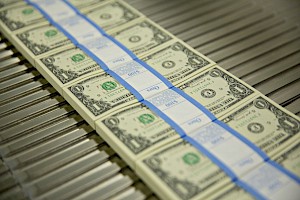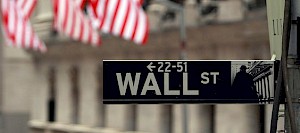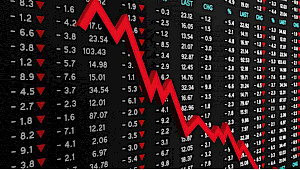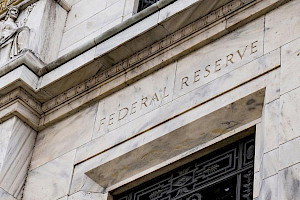The US Dollar: The Final Act
May 01, 2020The unthinkable is becoming ever more likely. The end of US dollar dominance and the beginning of some new form of global monetary system will soon be upon us. It was bound to happen at some point.
The story of reserve currencies is long and stretches far back into ancient times. But as modern history shows, the average lifespan of reserve assets is just around 100 years. (Cases in point, the French Livre and the Dutch Guilder.) The end is always caused by over spending on wars, over consumption, excessive debt and easy credit. Sound familiar? I was asked about this in an interview last summer and my response was that, while it is inevitable, the decline of the US dollar was still many years away. Of course, that was before the COVID-19 pandemic and the US fiscal and monetary response to the crisis it created.
I doubt we will emerge from this calamity and its prolonged economic impact with the current system intact. Why? I’ll try to put it simply and focus only on the important, big picture dynamics.
Seemingly overnight, the novel coronavirus has brought the global economy to a standstill and the United States is experiencing unemployment levels not seen since the 1930’s. The difference between then and now is the sheer scale of the US government’s reaction to the pandemic. It’s unlike anything we have seen in our lifetimes. In effect, its approach has been to do whatever it takes to ensure the system does not implode. Translation: There is no limit to deficit spending and money printing. It is an understandable and predictable reaction. The problem is that we’ve entered this crisis devoid of the necessary tools needed to rescue the economy without destroying the US currency at the same time.
I started writing about this eventuality back in 2001, when the first signs of the kind of monetary and fiscal behaviour that would lead to ever increasing moral hazard became evident. I said then that rising deficits coupled with tax cuts and artificially low interest rates were setting the stage for a financial accident. We got that in spades with the 2008 financial crisis. Despite its devastation, we were spared a depression similar to the aftermath of the 1929 crash because the Fed printed a lot of new money to create a floor to underpin the economy. But there is eventually a price to pay for all that money printing and others, such as famed hedge fund manager Ray Dalio, voiced the same concerns. To soothe this uneasiness, the Fed assured the public that this was only a temporary policy and that as soon as the economy stabilized, they would normalize interest rates and take all of the extra money out of the system.
But they never did.
Last year I wrote two articles (Dancing on the Edge of the Precipice and Gold, The Unfortunate Final Refuge) warning my readers that we were in near-term danger of another financial accident, saying “So, what might trigger the next crisis? And why won’t we have the tools we had in 2008 to prevent a total collapse? The next crisis can start out of nowhere. It can be triggered by the failure of a financial institution, a made-at-home political crisis, or a serious geopolitical event. Anything that removes the cloak of confidence that the entire financial system is based on.”
I would have never guessed a pandemic would be the trigger event, but the cause was never the point. It was bound to be something. The response by the US government in 2008 set us up for the next crisis. Specifically, quantitative easing and other policy measures continued beyond the point at which stability was reached. The effect was to create overheated markets and render the traditional tools for influencing monetary policy ineffective. We were destined to be in trouble once the next crisis came.
Cue the Covid-19 pandemic.
The policy response to Covid-19 and its ensuing effects on financial markets and the real economy was akin to the bad guy throwing his gun at the protagonist when he runs out of bullets. It began with over $2-trillion of newly printed money that will certainly be increased and a fiscal stimulus plan of another $2-trillion that is likely to increase to $4-5 trillion. Democrats and Republicans are united on this and I don’t see us ever going back to sub $1-trillion deficits. Unchallenged massive deficit spending is much too easy. There is no debate on where this money will come from. In fact, the money needed for all this stimulus doesn’t exist. The government needs to borrow it and there aren’t enough real lenders in the market to buy all of those treasury bills. For decades, the US has been able to fund its deficits because the rest of the world was happy to invest in US treasuries in order to sell Americans their exports - a vendor finance, if you will. With treasuries yielding effectively zero and money printing in overdrive, I don’t think foreign buyers will continue to fund American profligacy.
As I said a decade ago, the day would come that the Fed would be the buyer of US government debt of last resort and ultimately, the only buyer. All of that debt and the concurrent money printing is indistinguishable, as the debt is being monetized, regardless. These decisions are being made with zero regard to future consequences. The objective is the same – to avoid drowning at any cost, even if that means pulling the lifeboat under with everyone in it. Judging by the rally in equities since the Fed took action, at least they will save the stock market, which should make the 1% happy. (For the moment.) I don’t think we have seen the beginning of defaults and insolvencies in corporate America yet. The idea that we will have a V-shaped recovery is fantasy.
I predict the Fed balance sheet will be $10 trillion by year end. I will say it again. The Fed will never, ever be able to normalize interest rates and will never unwind its bloated balance sheet. That is a mathematical certainty. While I thought we might have crossed the event horizon, with respect to monetary policy after 2008, we are now squarely in the centre of a black hole. Policy makers made the fatal error long ago, choosing a series of Pyrrhic wins and inevitably losing the war. I can’t see how we emerge from the post Covid-19 crisis and it’s irreparable damage to the reputation of the US dollar without some new global monetary system. The unthinkable is now inevitable. The US is making the same mistakes made by Argentina, Venezuela and countless countries and empires throughout history. Creating a new system will not be easy; likely, it will be very messy. What that will look like is anyone’s guess. Perhaps a trading unit consisting of a basket of currencies and/or commodities. And of course, the only currency that has survived throughout the millennia, gold.
Originally published on Kitco.com










